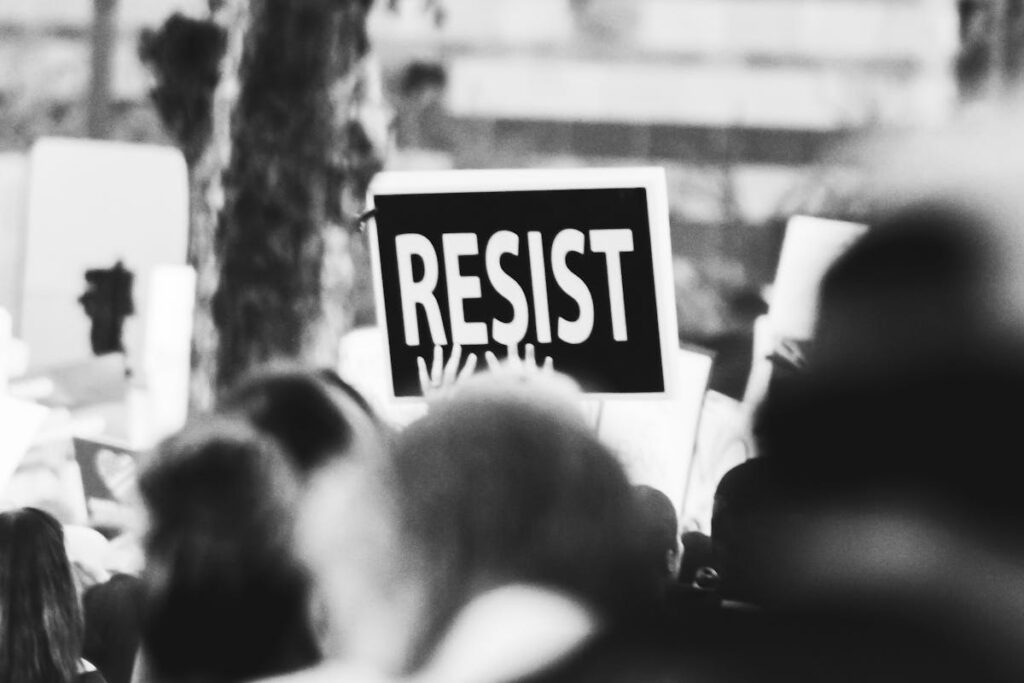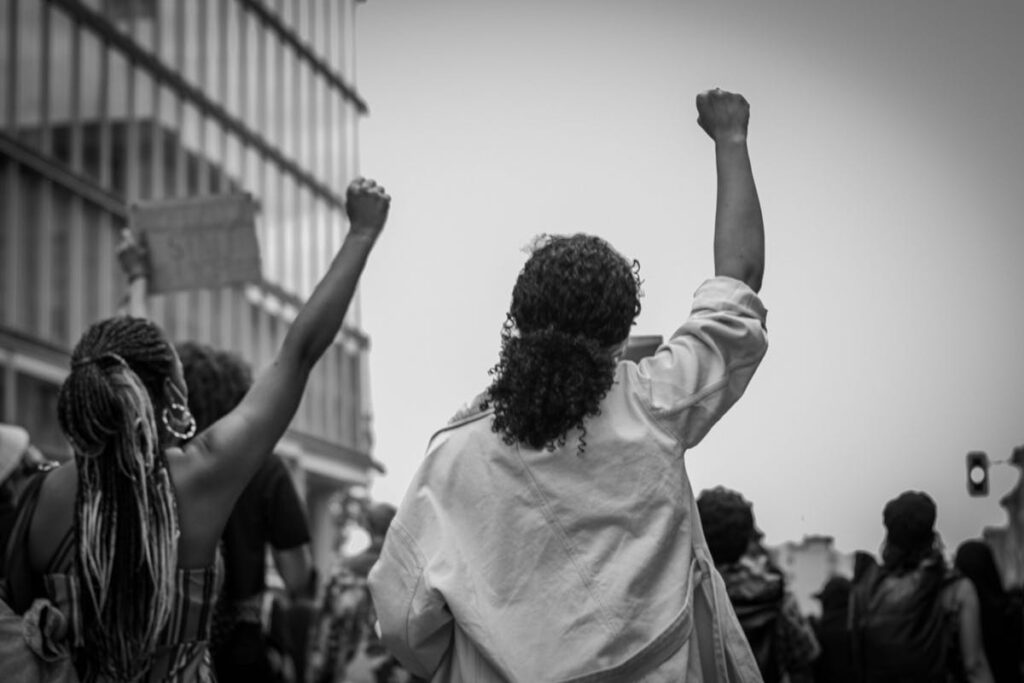The societal metamorphosis in America during the early 1960s, a tumultuous yet profoundly transformative period, remains a subject of significant importance. This era, characterized by the rise of the Civil Rights Movement, anti-war protests, and countercultural movements, ushered in a time of profound change that redefined the nation’s perceptions of equality, liberty, and personal expression. While these shifts were dramatic, the undercurrents which precipitated them and their enduring ramifications on contemporary American society warrant further exploration.
Sparking the Civil Rights Movement
In the crucible of the 1960s, a potent force was ignited that would forever alter the social and political landscape of America: the Civil Rights Movement. This dynamic eruption of grassroots activism, fuelled by the quest for racial equality, began to challenge the prejudiced status quo. Civil rights, an idea deeply embedded in the fabric of democracy, became more than just a theoretical concept. It transformed into a tangible objective, pursued with relentless fervor by activists. The movement, characterized by peaceful protests and powerful speeches, was instrumental in redefining the societal norms of America. By dissecting the inception of this movement, we can gain a deeper insight into the transformative power of collective activism, and its ability to drive monumental societal change.
Influence of the Vietnam War
The Vietnam War, a conflict of considerable intensity and duration, profoundly altered the cultural landscape of America. Its influence extended beyond the battlefield, creating a ripple effect that was felt keenly across the societal fabric, considerably impacting American attitudes and sparking a robust anti-war cultural movement. As we explore this transformative period, we will examine the war’s multifaceted impact to gain a deeper understanding of its role in the 1960s cultural shift.
War’s Impact on Society
Undeniably, the Vietnam War’s profound influence led to a significant shift in America’s social and cultural landscape during the 1960s. The pervasive war propaganda deeply penetrated the American mindset, dramatically altering societal norms and values. This propaganda, coupled with the harsh realities of war, created a societal trauma that resonated throughout the decade. The war’s unfiltered brutality, disseminated through television and print media, exposed the American people to a level of violence previously unseen. This exposure led to a profound disillusionment with the government and its policies, a shift that would shape America’s cultural fabric for years to come. Consequently, the Vietnam War’s impact on society was not merely a consequence of conflict, but a transformative force in its own right.
Anti-War Cultural Movement
Drawing upon the societal trauma and disillusionment birthed from the Vietnam War, the anti-war cultural movement emerged as a significant force during the 1960s. This movement, characterized by widespread anti-war protests and protest music, manifested a considerable shift in America’s cultural fabric. Protest music, in particular, served as an influential medium, giving voice to the public’s growing resentment and fear. Songs with potent lyrics resonated with the masses, reflecting their shared disillusionment and desire for peace. The anti-war protests, often marked by civil disobedience and creative expression, formed a powerful, visible opposition against the war. This cultural movement, driven by a collective quest for peace, catalyzed a profound transformation in America’s societal attitudes and values.
Birth of the Counterculture
The 1960s, a decade marked by profound cultural and social changes, saw the emergence of a notable phenomenon: the counterculture. This period gave birth to the vibrant Hippie Movement, which was characterized by a radical departure from mainstream societal norms and values. Concurrently, the Civil Rights Movement was reshaping America’s socio-political landscape, directly influencing this counterculture and its impact on American society.
Hippie Movement Emergence
In a time when civil unrest was at its peak, a countercultural movement, often dubbed as the “Hippie Movement,” began to take shape in the United States during the 1960s. This movement brought a radical shift in societal norms, challenging the conventional and advocating for an open-minded, free-spirited way of life. The ‘flower power’ symbol, associated with passive resistance and non-violence ideology, became an iconic emblem of this era, while peace symbols were ubiquitously displayed, highlighting the Hippies’ anti-war stance. However, this cultural revolution was not merely aesthetic; it represented a fundamental shift in American values, with emphasis on personal autonomy, communal living, and a deepening respect for nature. This movement greatly influenced subsequent societal and cultural trends.
Civil Rights Impact
Paralleling the rise of the Hippie Movement, another significant cultural shift was unfolding within the United States during the 1960s. This was characterized by seismic shifts in civil rights legislation, a result of relentless grassroots organizing. African Americans and their allies challenged long-standing racial segregation and discrimination through both nonviolent and assertive measures. The impact was profound. Sweeping reforms, including the Civil Rights Act of 1964 and the Voting Rights Act of 1965, fundamentally altered the social, political, and legal landscape. These changes, however, were not without resistance and turmoil. The struggle for equality sparked fierce debates and violent confrontations, underscoring the deep-seated racial tensions that the country had yet to fully address. This era left an indelible mark on America’s cultural fabric.

Impact of the Space Race
While the 1960s may be remembered as a time of cultural and political upheaval, it was also a period marked by extraordinary scientific and technological advancements, most notably, the Space Race. This era of intense space exploration between the United States and the Soviet Union ignited a sense of wonder and curiosity for the cosmos, which transcended into every facet of American society. It fueled technological advancements that trickled down to the consumer level, influencing the development of electronics, computers, and telecommunications. The Space Race, fundamentally, reshaped the cultural paradigm, challenging the existing notions of boundaries and human potential. It fostered a culture of innovation and discovery, leaving an indelible impact on America’s perception of science, technology, and their role in society.
Redefining Artistic Expression
Just as the Space Race propelled America’s technological prowess to new heights, the 1960s also witnessed a significant transformation in the domain of artistic expression. The decade brought forth two influential movements: abstract expressionism and pop art. While abstract expressionism was characterized by its non-representational approach, allowing artists to convey emotions and ideas beyond traditional aesthetics, pop art emerged as a reaction to the dramatic changes in post-war consumer culture, encapsulating a fascination with everyday objects and popular culture. These movements challenged and redefined the paradigms of artistic expression, steering it away from mere representation to a more nuanced exploration of subjective experience and social commentary, marking a profound shift in America’s cultural landscape.
Changing Women’s Role in Society
The 1960s marked a significant turning point in the role of women in American society, with societal norms, laws, and gender roles undergoing a drastic reevaluation. This period saw an unprecedented shift toward gender equality, as women began to challenge traditional expectations and advocate for their rights. The rise of the feminist movement triggered an analytical examination of women’s position in society. As the decade progressed, women increasingly insisted on their workplace rights, demanding equal pay and opportunities. Indeed, this era signified the end of the acceptance of gender discrimination in employment. The discourse on women’s roles in society became more inquisitive and detailed, thereby fostering a culture that no longer merely accepted, but interrogated, the patriarchal status quo.
Emergence of Youth Activism
Revolutionary fervor, a beacon of the 1960s, found its most vibrant expression in the emergence of youth activism. This period marked a significant shift towards youth empowerment, as young people began to channel their energy and idealism into tangible activism strategies.
Four key elements underscored this surge in youth activism:
- The Civil Rights Movement: galvanized by injustices, youth actively participated in protests and sit-ins.
- The Vietnam War: student-led anti-war demonstrations became a hallmark of the era.
- The Women’s Liberation Movement: young women spearheaded campaigns for gender equality.
- The Environmental Movement: youth activism paved the way for environmental consciousness.
Intriguingly, these movements fostered a sense of autonomy among the youth, transforming them into change agents, a shift that would shape America’s future.
Long-term Effects on Modern America
Undeniably, the cultural revolution of the 1960s has left an indelible imprint on modern America. This period’s social norms have morphed and evolved, strongly influencing today’s societal expectations and behaviors. Many norms discarded then, such as rigid gender roles and segregation, have paved the way for a more inclusive America. Additionally, the economic shifts that occurred during this era have fundamentally shaped our current economic landscape. The growth of consumerism and the rise of the middle class during the 1960s have continued to influence American economic policies and personal financial behaviors. Consequently, the long-term effects of the 1960s cultural revolution are both profound and pervasive, permeating every aspect of modern American life.
Frequently Asked Questions
What Economic Factors Contributed to Americas Culture Shift in the 1960S?
Economic prosperity contributed to the culture shift in the 1960s through the growth of consumer culture. Advancements in technology, increased disposable income, and the rise of advertising influenced societal values, norms, and behaviors greatly.
How Did Religion Influence the Cultural Changes in America During the Early 1960S?
Religious pluralism and social activism greatly shaped the 1960s cultural transformations. Diverse religious beliefs fueled social activism, impacting societal norms and values while fostering broader acceptance and understanding of different faiths and perspectives.
What Role Did Immigration Play in the Culture Shift of the 1960S in America?
Immigration policies during the 1960s greatly contributed to America’s cultural diversity. This period saw an influx of immigrants, who brought with them distinct cultures, ultimately influencing and reshaping American societal norms and traditions.
How Did the 1960S Cultural Shift Impact Americas Educational System?
The 1960s cultural shift instigated significant educational reforms in the United States, leading to curriculum changes that embraced diversity and promoted critical thinking, thereby reshaping the nation’s educational landscape profoundly.
What Was the Influence of Music on the American Culture Shift in the Early 1960S?
Music evolution considerably influenced the cultural revolution in the 1960s. It fostered societal change and self-expression, with genres like rock and folk music becoming platforms for political dissent and civil rights activism.

